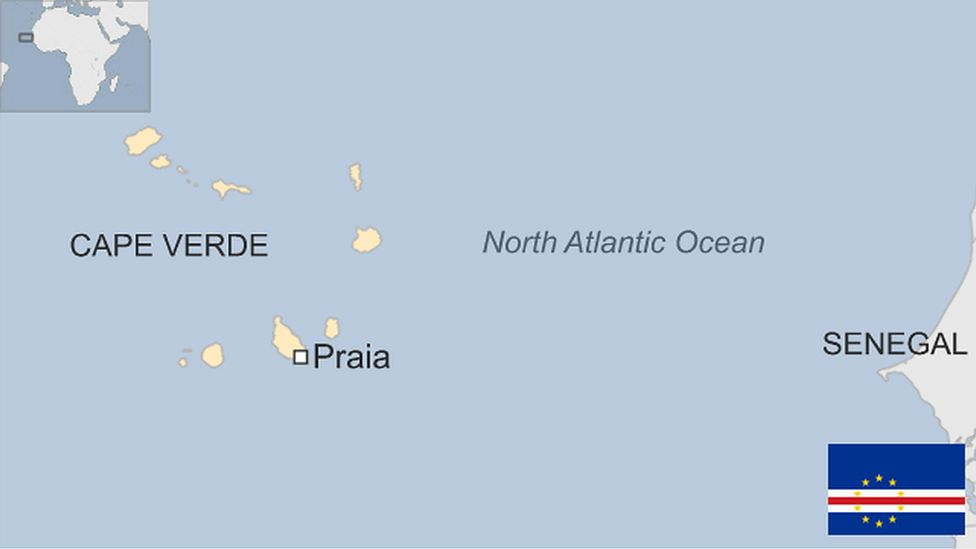Cape Verde country profile
-
Published

Poor in natural resources, prone to drought and with little arable land, the Cabo Verde or Cape Verde islands have won a reputation for achieving political and economic stability.
The former Portuguese colony comprises 10 islands and five islets, all but three of which are mountainous. The archipelago lies around 500km off the west coast of Africa.
It was at one time an important centre of the slave trade.
During the 20th Century severe droughts caused the deaths of 200,000 people and prompted heavy emigration. Today, more people with origins in the islands live outside the country than inside it. The money that they send home brings in much-needed foreign currency.
- Read more country profiles - Profiles by BBC Monitoring
REPUBLIC OF CABO VERDE: FACTS
- Capital: Praia
- Area: 4,033 sq km
- Population: 561,900
- Languages: Portuguese, Cape Verdean Creole
- Life expectancy: 69 years (men) 77 years (women)
LEADER
President: Jose Maria Neves
Centre-left opposition candidate Jose Maria Neves won the October 2021 election, ending a 10-year hold on the presidency by the centre-right MPD party.
President Neves served as prime minister from 2000-2016, and his task has been to restore stability to the tourism-driven economy after the recession caused by the Covid-19 pandemic.
His PAICV and the MPD have dominated politics since independence from Portugal in 1975, and have alternated in power since multi-party democracy was introduced in 1991.
MEDIA
The country stands out in the region for its legal framework for journalists, says Reporters Without Borders (RSF) and press freedom is guaranteed by the constitution.
Much of the media is state-run, but there is an active private press and a number of private broadcasters.
There are five television networks and about 10 radio stations.
TIMELINE
Key dates in the history of Cape Verde:
1462 - Portuguese settlers land on Santiago - before the arrival of Europeans, the islands were uninhabited. Cape Verde becomes a centre for the trade of cheap manufactured items such as firearms, rum and cloth and plays a key role in the Atlantic slave trade.
1495 - Becomes a Portuguese crown colony.
1956 - Amilcar Cabral, a native of Cape Verde, co-founds the African Party for Independence of Guinea and Cape Verde (PAIGC) in Guinea-Bissau.
1960 - Many Cape Verdeans join liberation war against Portuguese rule in Guinea-Bissau. The struggle is led by the African Party for Independence of Guinea and Cape Verde (PAIGC).
1975 - Cape Verde becomes independent and adopts constitution envisaging unity with Guinea-Bissau.
1980 - Cape Verde ditches plans for unity with Guinea-Bissau following coup in latter.
1981 - African Party for the Independence of Cape Verde (PAICV) replaces the PAIGC and becomes the country's sole party.
1992 - A new constitution brings in a multi-party system.
2007 - World Trade Organization (WTO) council approves Cape Verde's accession to the organisation.
2013 - Government requests that the Portuguese version of the country's name, Cabo Verde, be used as part of the country's official name when it is rendered in other languages.
Related Topics
-
-
Published22 May 2023
-
-
-
Published2 April
-
-
-
Published12 April 2023
-
-
-
Published26 February
-
-
-
Published14 April 2023
-
-
-
Published27 November 2023
-